How do you build up the upper pectoral muscles?
For bodybuilders who want to target a specific part of the muscles, it is not easy. Athletes in general often have a delay in the upper pectoral muscles compared to the lower ones. The interior of the pectoral muscles is one of the weak points of certain athletes and competitors. Their development depends on many parameters and in particular our muscular insertions which we will see in detail later. If this delay persists, it will be necessary to accentuate your training by targeting these portions and thus to work the pectorals in isolation. So how to build up the upper pectoral muscles or how to develop them to the maximum?
Contents
Working the upper pecs: Techniques
Today, we're going to take a look at the different techniques for working the upper pectoral muscles. To have harmonious pectoral muscles, it's essential that they be voluminous. But sometimes, depending on our genetics and how we work them, there can be a delay at the top which means that our pecs are not homogeneous when it comes to volume. Why is this? Because we need to work all the pectoral fascicles as much as possible. We'll take a look at the anatomy of the pectoral muscles and, together, we'll look at some of the exercises you can do to get the best out of your pecs.
To build up your pectoral muscles in an optimal way, it is important to understand their anatomy, role and function. Thus, we can distinguish the pectoralis major and the pectoralis minor (located under the pectoralis major, not very voluminous and invisible):
The pectoralis major, which forms the chest, is the one that will interest us here because it is the one that we see and that is simply called "pectorals", it is composed of three bundles:
- The clavicular fascicle which attaches to the clavicle and forms the upper pectoral muscles.
- The second extends from the sternum to the ribs.
- The third originates in the abdomen and the rectus muscle.
Anatomy of the pectoral muscles
These last two bundles forming the middle and the bottom of the pectoral muscles are the part naturally developed in the man, from where the interest to put the accent on the higher part for a harmonious development.
The upper pectoral area is an area that many people have difficulty developing. Indeed, our muscles, our muscular insertions as well as the shape of our pectorals are different from one person to another, it is genetic. Some will manage to easily build up all the different pectoral fascicles while others will have more difficulty. For the latter, that will give a visual aspect of pecs collapsed and thus which seem flat and without volume. However to have beautiful muscular and voluminous pecs in a man is still much more pleasant than to have flat pecs.
Learn more about muscles and muscle groups, you can read this article :
So to get back to the muscles of the upper pecs and find out how to make up for this weak spot: what can be done about it? How can I target my upper pecs? What are the best exercises? You've already tried multitudes of methods and every possible combination of exercises and variations, and nothing helps. Here's a complete workout to help you improve this muscle.
The best exercises to develop pectoral muscles
What you need to do first is to get back to basics with perfect execution. But also a voluntary contraction (muscle and brain connection) of the targeted area. For 90% of the practitioners, it is not about different exercises or a new training routine but first of all about correcting your technique. It is a question of activating the targeted part of the muscle as much as possible and optimising the time under tension.
My Youtube video that you can find below will help you build your workout to target the upper pecs and activate the muscle fibers involved.
Here are the details of this one to develop the high part of the Pecs during a bodybuilding session.
Exercise 1: inclined pulley splits
After having warmed up my pecs for 15 minutes, I start my session by pre-fatigued the upper pectoral muscles thanks to an isolation exercise. The inclined splits with the pulleys will allow a blood flow in the targeted muscle area and activate the "muscle/brain connection". Indeed, during the movements, we will voluntarily contract the muscles of the top of the pectoral to the maximum thanks to the pulleys allowing a direct voltage.
4 SETS OF 15 REPETITIONS WITH 1 MINUTE REST BETWEEN EACH SET
Exercise 2: Dumbbell bench press
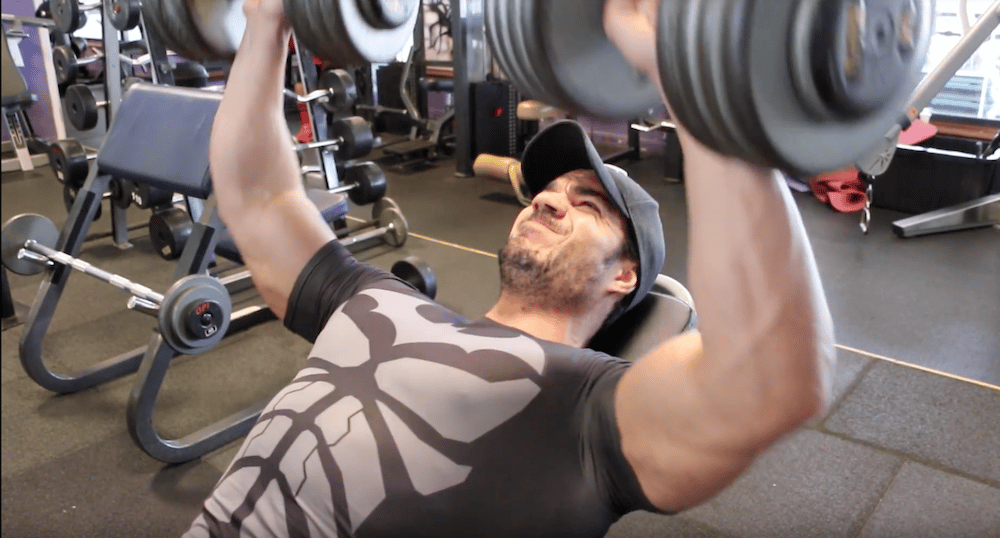
For the second exercise we will use dumbbells instead of the free bar. This will bring a greater stretch to the pectorals and activate the stabilizing muscles. We will target the upper pectoral area by tilting the bench at about 30 degrees.
The dumbbell bench press (pronation grip) will be performed in a pyramid technique for mass: Increase the weight with each set while reducing the number of repetitions. We will finally finish the set with an intensification technique called the rest pause (or partial pause). At the end of the last set, we will take 10 seconds of recovery using the same weights and then perform 5 reps again, then 10 seconds of rest and perform 2 to 3 reps with the same loads.
1 SET OF EACH BELOW
15 REPETITIONS with 1 MIN 15 OF REST
12 REPETITION with 1 MIN 30 REST
10 REPETITIONS with 1 MIN 45 OF REST
8 REPETITIONS (REST PAUSE)
Exercise 3: The guided barbell bench press, in combination with the seated bench press on the machine
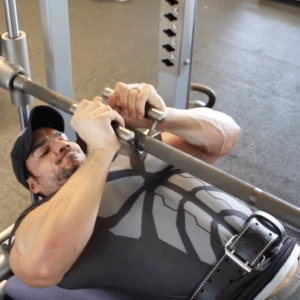
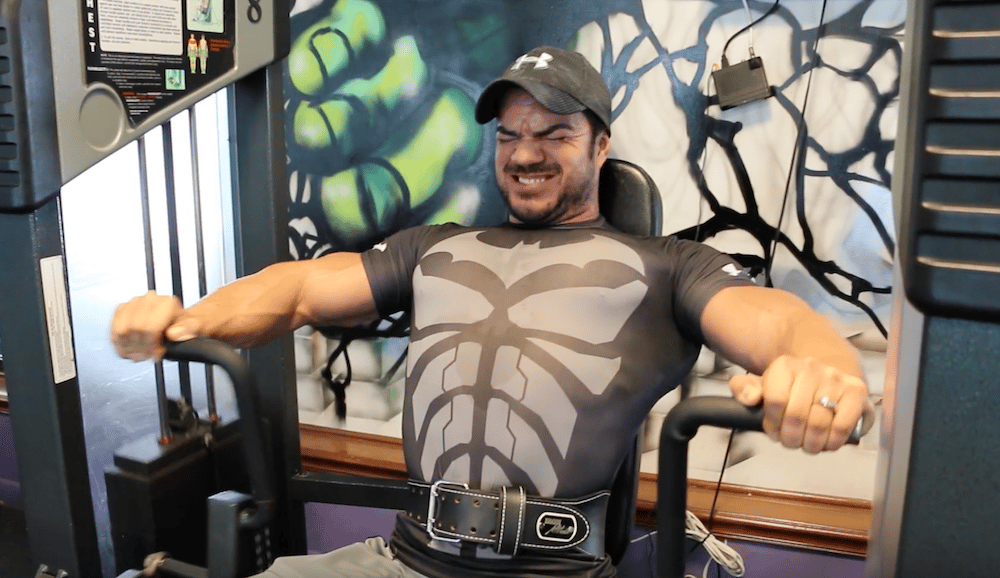
THE TWO EXERCISES ARE LINKED WITHOUT RESTING TIME
4 SETS OF 12 TO 15 REPETITIONS FOR EACH EXERCISE
1 MIN 15 OF REST
This 3rd exercise of body-building that we are going to carry out will be a biset (the 2 exercises are connected without time of rest). The first exercise of this biset will allow to pre-fatiguer the top and inside of the pectoral muscles.
We will be lying on the weight bench and we're going to use the handle we generally use for the low pulley pull (back) and we're going to use the guided bar in neutral grip to perform the movements. Arms first against the chest, then arms straight.
Be careful not to use too much weight for this exercise, as the aim is to feel the pectoral contraction first (as if they were touching). If you put too much weight on, the triceps will take over and the exercise won't be optimal. We'll then move on to an exercise targeting the pectorals as a whole, the seated bench press. Elbows should remain below shoulder level, shoulder blades glued together, and we need to get the chest out.
Exercise 4: Pulley splits
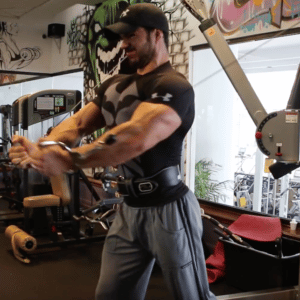
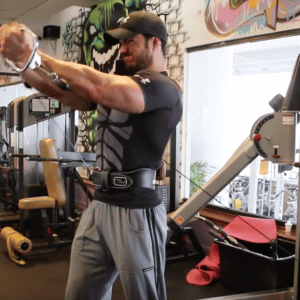
We will start by putting the pulleys at the bottom and then move the pulleys up one notch with each set.
8 X 15 REPETITIONS PER SET WITHOUT REST
For the final finishing and post fatigue exercise, we will target all areas of the pectoral muscles using all degrees and angles that the opposite pulleys can offer. We will start with the pulleys from the bottom to the top and finish with pulleys from the top to the bottom.
And here is a crazy workout to test and approve to progress if at least like me you had trouble developing your upper pecs.
If you perform these muscle-building exercises correctly, congestion and volume are guaranteed, but don't forget that muscle-building takes time. You'll find other variations and exercises for pectoral muscles in the complete program here.
Other articles to read :
What is a split bodybuilding program?
Successful weight gain: the fundamentals of muscle gain
How to build muscle with TRX straps?

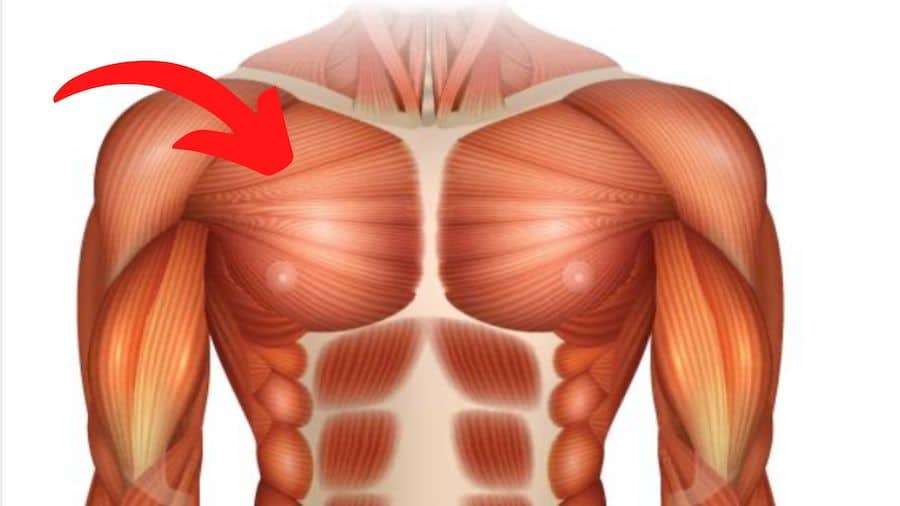
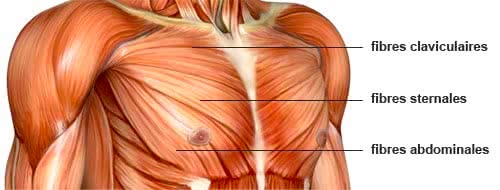
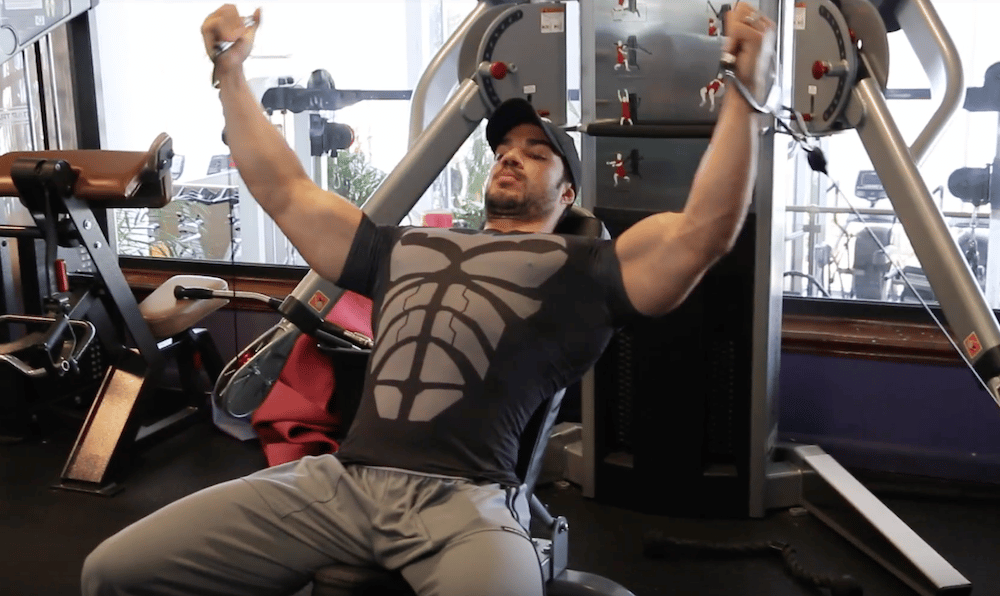


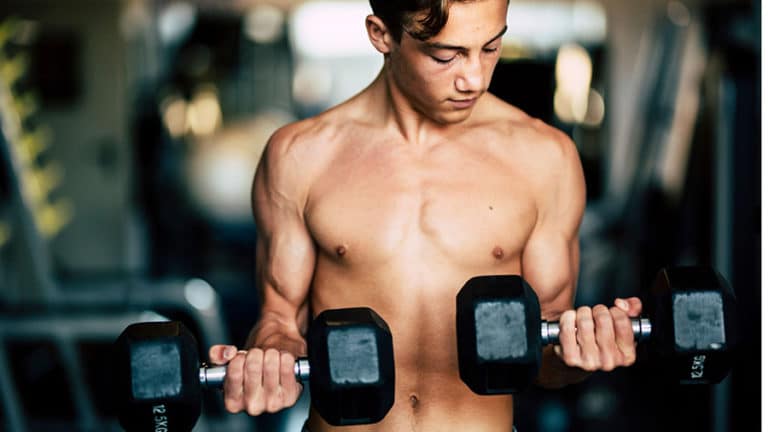

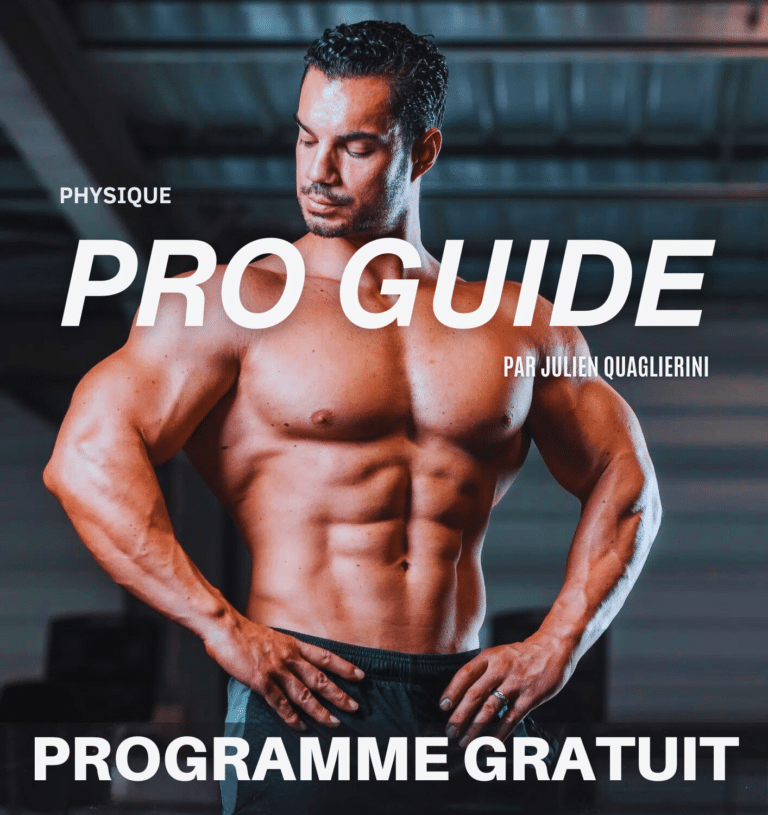
a great program that stings
I tested it with my friend at the gym and we had a blast
Many people say that it is impossible to build up the inner pectoral muscles. I saw that you talk about it in your videos saying that it is possible. Can you enlighten us on the subject
Good program
I'm a beginner and I don't feel my pectorals.
Try squeezing a disc between your hands with your arms semi-erect and pretend you are trying to crush your palms on the disc. You should feel your pecs. Work on the feeling, then try to feel them with push-ups, then bench press (light at first and slow), it's all about the muscle/brain relationship. it takes years sometimes...